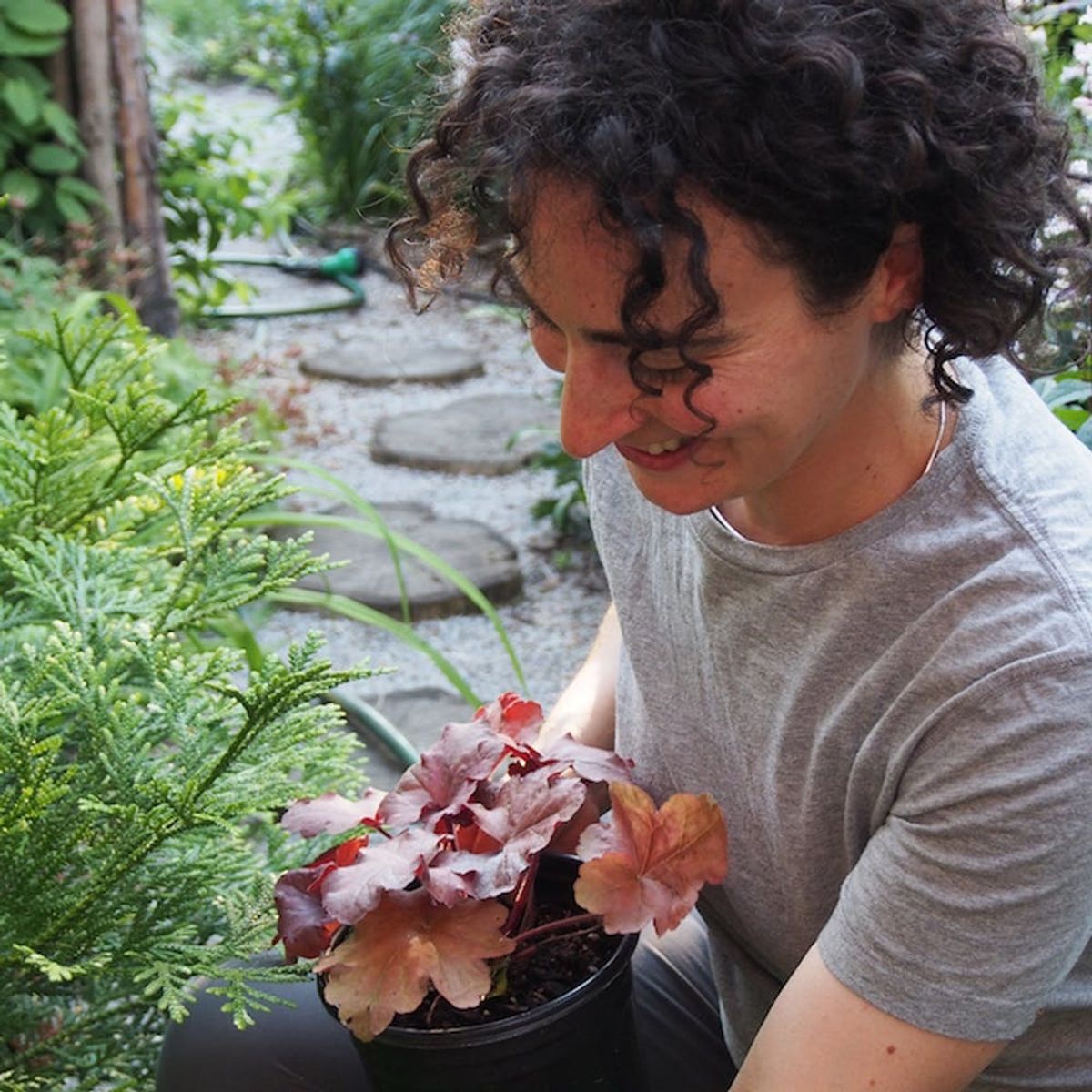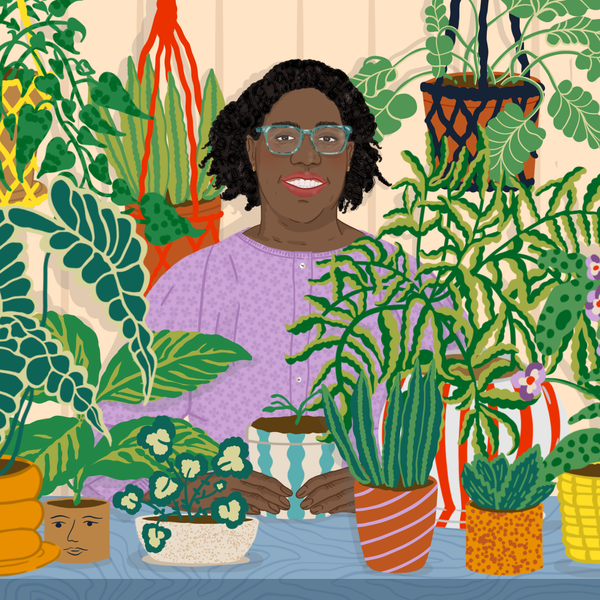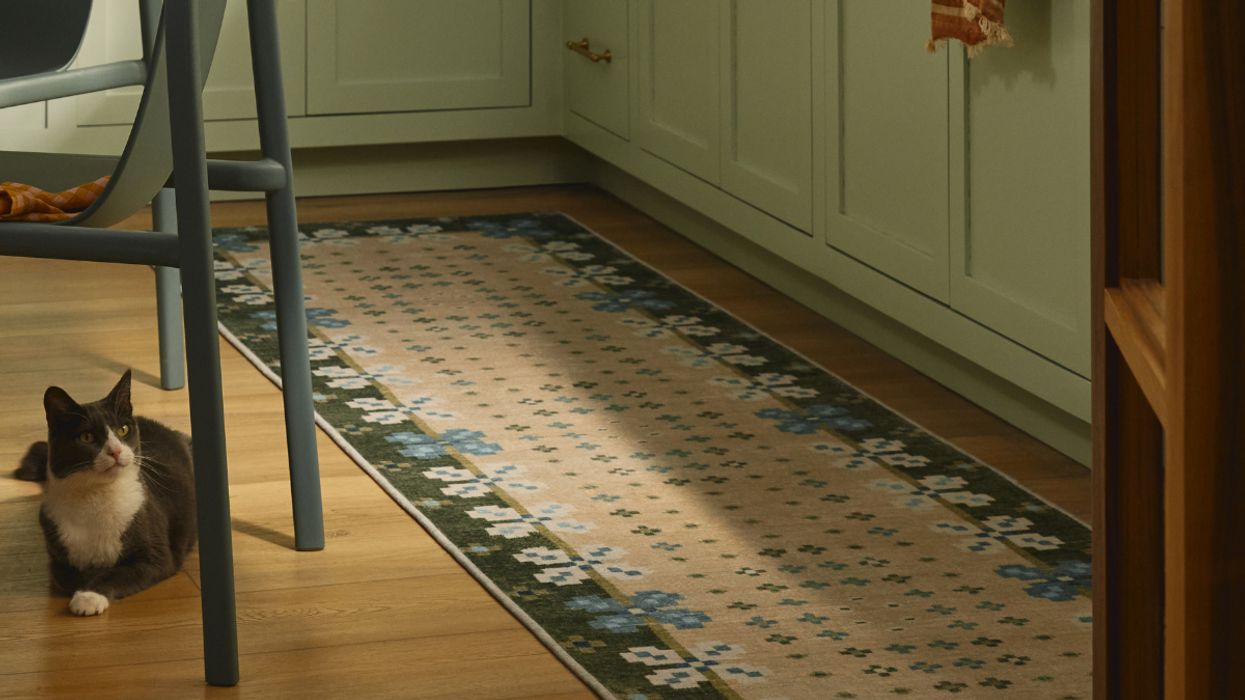Learn how this #girlboss turned her love of design and plants into a full-fledged career.
How to Quit Your Day Job and Become a Landscape Designer

If you’re an apartment dweller who can magically transform a small outdoor space into a gorgeous tiny garden with DIY succulent pots that are Insta-worthy, or you have dreams of creating a large-scale rainbow garden in your neighborhood, you might want to consider a career working your talent as a landscape designer. Sick of working indoors and longing to spend your days outside turning empty spaces into lush plant life? This might just be your ideal work life. In this week’s How to Quit Your Day Job series, we chat with landscape designer Chloe Philip about her career and what led to her dream job.
Before she made the jump into becoming a landscape designer, Chloe’s first career was in product design. She worked in Germany for Adidas, then moved back to Canada to design hospital furniture. She worked in industrial design for nearly a decade and realized that she missed hands-on experiences.
“Working with my hands was integral to my happiness and creativity; I missed it and began looking for new outlets,” says Chloe. To launch her new career as a landscape designer, she decided to go back to school at night to study horticulture and landscape design while also taking on part-time gigs gardening at a children’s hospital, and then later for a landscape maintenance company. When she felt confident in her skills and learned how to build her business, she quit her day job and opened her landscape and garden design studio.
The Tips
1. Test the waters. Chloe didn’t jump into her new career without first seeing how she enjoyed working part-time during the summers at a children’s hospital. She handled the garden there while going back to school at night to study horticulture. It was important for her to feel excited and happy about this new leap, and taking baby steps in that direction cemented her feelings that she loved landscape design.
Another bit of valuable advice for newbies: “Talk to people already in your field of interest, ask people about their experiences and how they got there. You’ll be surprised how much people, even strangers, want to help when asked to.”
2. Transition your skill set. Chloe’s previous career in industrial design taught her how to realistically turn people’s needs and desires into real products and experiences. “As a landscape designer and business owner, those skills have been transferable and creativity knows no real boundaries except the ones a person places on it,” says Chloe. Think about ways your current gig could help you in your dream job.
3. Swap stories with your colleagues. Your friend might not be a landscape designer, but if she’s a small business owner, she probably has some war stories and battle scars to help you navigate your studio. “I’ve found that friends, often also business owners, are always great to share experiences and swap advice with — in this way we encourage one another,” says Chloe. Chloe also credits her parents, who operate a small business, for teaching her the fundamentals of being a business woman.
4. Figure out your creative process. Like Chloe mentions, part of her daily job is working to make her clients’ visions for their outdoor spaces into a reality, so she has to figure out how best to achieve that before she starts making any changes to the current space.
Chloe first visits the site and walks through the current space. Then she interviews the client about their desires and their honest assessment of how much they can maintain the upkeep of the landscape. She studies the light, soil and slope of the existing site. “I make quick sketches that capture how a site makes me feel and where it could go. From there I develop a concept and present it to the client. Based on their feedback, it gets fine tuned before being transformed into a final plan,” says Chloe.
5. Get outside. Part of what Chloe loves about her job as a landscape designer is working outside. Whether she’s listening to birds chirp or catching a glimpse of late afternoon sun, being outdoors brings her immense joy. “I really believe in the power of nature and its benefits on our mental, physical and emotional states,” says Chloe. If dirt, soil and plants sound like your ideal office environment, than this might be just the thing for you.
6. Go with your gut. As a new business owner, there’ll be lots of times when you’ll need to make big and small decisions on your own. Chloe suggests trusting your gut. “Follow your intuition about both people and situations; it’ll lead you in the right direction. You just need to learn to heighten your awareness of it and not ignore it,” says Chloe.
7. Reach out beyond your comfort zone. Going into business for yourself is full of challenges: The day to day may not be super predictable like a 9-to-5 gig. Branching out on her own has taught Chloe how to be flexible. “Going into business and staying there successfully is all about adaptability,” says Chloe.
Perfect Your Skills
1. Succulent Gardening Online Class ($19): Before you start designing bigger landscapes, try your hand at low maintenance succulents. Choose your succulents, and learn how to develop your gardening style in this online DIY class.
2. 28 to Make: Daily Creative Projects (Free): Like Chloe suggests, trying your hand at different creative projects until one sparks your interest is a good way to get your feet wet first and find out if you like it. This online class invites you to try different creative ideas to see what you enjoy.
3. Meet Up With Women Entrepreneurs (Free): Meeting like-minded women leaders is one way to network and learn from hustlers who have been there and done that. With MeetUps all across the world — from Singapore to New York City — you’re bound to find the group that’s right for you.
What’s your dream career? Tweet us @BritandCo to let us know, and we could feature it in the next column!
(Photos via Chloe Philip)


















